Indigenous Culture in the Niagara Region
Niagara has a rich heritage and legacy of Indigenous life, culture, and community. These lands, which have been inhabited by Indigenous peoples for millennia, have witnessed in more recent times the presence of the Neutral Nation, Six Nations of the Grand River of the Haudenosaunee Confederacy, and the Mississaugas of the Credit First Nation of the Anishinaabek people.
Niagara has a rich heritage and legacy of Indigenous life, culture, and community. These lands, which have been inhabited by Indigenous peoples for millennia, have witnessed in more recent times the presence of the Neutral Nation, Six Nations of the Grand River of the Haudenosaunee Confederacy, and the Mississaugas of the Credit First Nation of the Anishinaabek people.
In addition, many other First Nations, Métis, and Inuit people from across North America (Turtle Island) live and work in Niagara today. The land of the Niagara River corridor was referenced in treaties made between the Crown and First Nations in the 18th century.
Learn, Commemorate and Honour Indigenous Cultures in Niagara
The Niagara Region has a long-standing friendship with the Indigenous peoples of this land. Oral tradition and archaeological evidence show that Indigenous peoples lived along the Niagara River for some 13,000 years. This friendship is seen throughout Niagara Region’s most prominent history, which includes strategic alliances activated during the War of 1812. First Nations allies helped the heavily outnumbered defenders of Upper Canada stand against overwhelming American forces. Their efforts helped secure victory at pivotal events throughout the War of 1812 and secured freedom for all Canadians.
Explore the River
Today, the Niagara Region is a history-rich area with many opportunities to learn, commemorate, and honour Indigenous and ally relations. When visiting Niagara Region, there are many sights and legacy places to see, including:
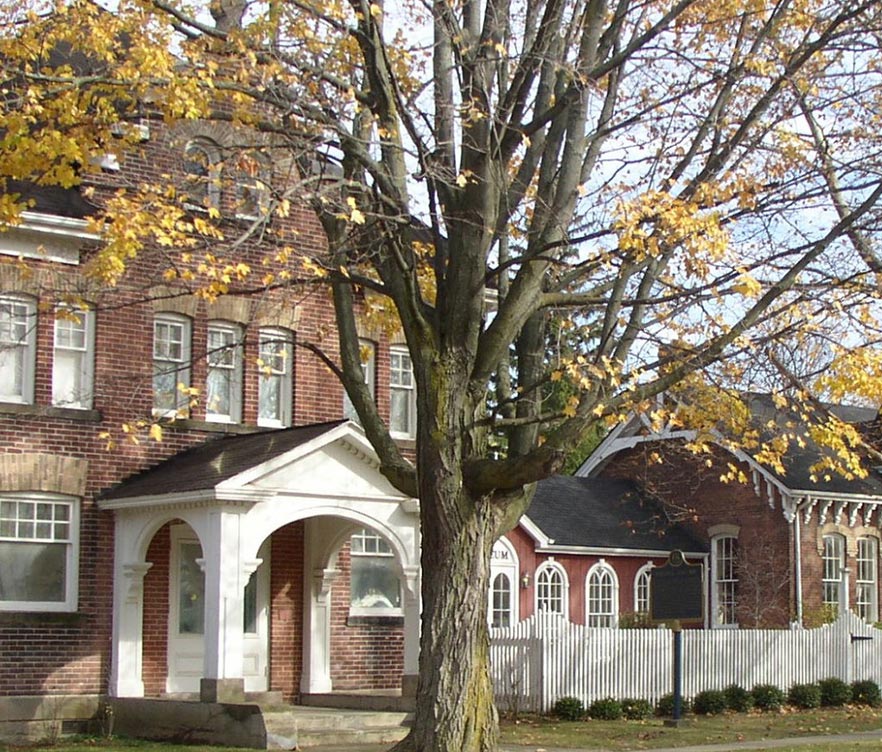
Learn
Events at Niagara Parks
Niagara Parks is proud to host a variety of Indigenous cultural events throughout the year, from programming during Indigenous Month in June to the annual Valour and Victory Ceremony to honour Indigenous Veterans in November and more. Visit niagaraparks.com/events to see what’s coming up or subscribe to Niagara Parks’ newsletter to stay up-to-date.
Niagara-on-the-Lake Museum
The Niagara Historical Society was established in 1895 to foster an appreciation of Niagara-on-the-Lake’s rich heritage. Within a year, the Society had assembled a significant collection of artefacts and decided to open a Museum in the local Courthouse.
The Museum contains one of Ontario’s most important history collections, including Indigenous material. Niagara-on-the-Lake was, and is, an important home for Indigenous peoples. The town provided a safe haven for refugees and United Empire Loyalists, was the capital of Upper Canada, and has been visited by millions as a place of recreation for over 160 years. The history of the area played a major role in the development of Canada.
Upper Canada Native Art Centre
Upper Canada Native Art specializes in Haudenosaunee and Inuit art and unique and exquisite giftware celebrating and promoting Canadian Native Artisans. The team at Upper Canada Native Art is renowned in the industry for its expertise in sourcing and collecting the best in authentic, original, and high-quality Indigenous art.
Maid of the Mist and the Thunder
Beings at Journey Behind the Falls 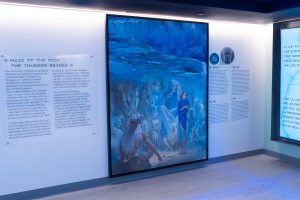
Learn about Indigenous history and the tales of Niagara Falls! For over a millennia Indigenous people have called Niagara Falls home, and now, as part of a recent renovation at the visitor queuing area inside Journey Behind the Falls attraction, guests can learn about this fascinating history. The centerpiece includes a stunning reproduction of an oil on canvas painting by Indigenous artist Oren Lyons (Joagquicho), Maid of the Mist and the Thunder Beings.
Oren Lyons (Joagquisho) is an Indigenous icon who serves as a “faithkeeper” of the Onondaga Nation and the Haudenosaunee Confederacy. He is widely recognized as an orator of Haudenosaunee history, culture, and philosophy, as an artist of distinction, an environmentalist, and international Indigenous human rights leader.
In this painting, he portrays the Seneca story of the Maid of the Mist and the Thunder Beings, as told by Seneca Chief Corbett Sundown.
Location: 6650 Niagara River Pkwy, Niagara Falls, ON L2E 6T2
An Indigenous Journey of the Niagara Glen
Niagara Parks will be offering a new audio tour experience at the Niagara Glen titled, Rekindling All Our Relations. This experience has been curated by Indigenous community member Michele-Elise Burnett and audio-engineered by Indigenous community member William Reich, with the support of the Niagara Parks Foundation. Both Burnett and Reich are Metis citizens of Ontario with Algonquin roots and members of the Bear Clan.
Rekindling All Our Relations is a self-guided hiking audio tour that will be an Indigenous journey of the Niagara Glen, aiming to bring the minds of guests together to become immersed in Indigenous teachings focused on cultivating a deeper understanding of and appreciation for the Niagara Glen.
Location: 3050 Niagara River Pkwy, Niagara Falls, ON
new to Niagara Parks: Indigenous Niagara Heritage and legacy tours
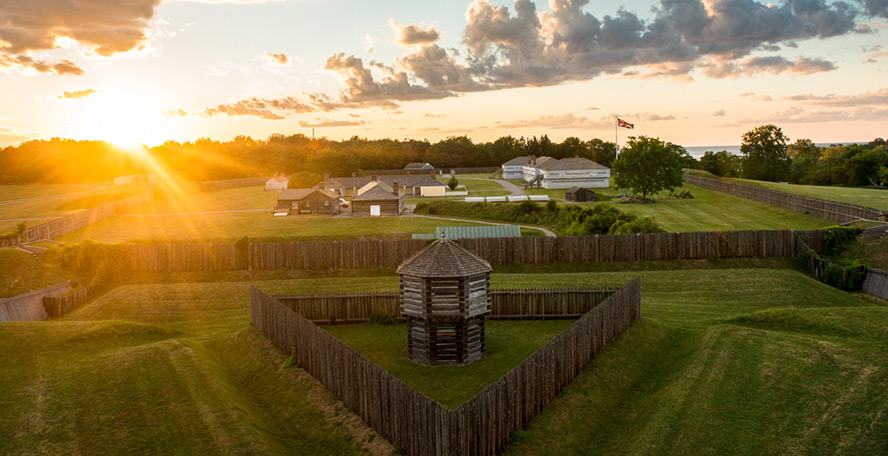
Fort George & the Indian Council House
Built in 1796 near Fort George, the British Indian Department Indian Council House was where the Haudenosaunee Confederacy (Six Nations) and other Indigenous allies gathered for councils, treaty negotiations, and to receive annuities from the British Crown. Hundreds from various Indigenous nations, including Indigenous allies living in the United States, participated in important meetings at this site that defined the future of generations.
The Indian Council House was destroyed during the War of 1812 and rebuilt in 1815. The building no longer exists but there is a series of commemorative markers at the site, referred to as The Commons. This public location is owned and operated by Parks Canada.
The Indian Council House was located at Butler’s Barracks National Historic Site.
Mewinzha Gallery & Interpretive Centre
Located in the atrium of the Peace Bridge Authority Administration building, the Mewinzha Archaeology Gallery features a display of 11,000-year-old artifacts and contemporary artworks that tell rich stories of Indigenous history, art, and culture. Mewinzha is an Anishinaabemowin word meaning “a long time ago.” The artifacts were recovered during construction of the building and adjacent area. The gallery honours the First Peoples who lived, traded, and created a flint-knapping industry at the site.
The Mewinzha Archaeology Gallery is located inside the Peace Bridge administration building (100 Queen Street, Fort Erie, Ontario)

Pollinator Gardens
Niagara Parks’ pollinator garden route features twelve pollinator gardens that range from formal manicured gardens to natural habitats, all providing support for a wide range of native pollinating species along the Niagara Parkway. To celebrate Ontario150, the province’s 150th anniversary of Confederation in 2017, Niagara Parks worked with local Haudenosaunee artists to develop a collection of animal legends and artwork that feature some of Ontario’s native species. The collection was inspired by the Haudenosaunee and Anishinaabek peoples who inhabited the region throughout history, and references their spiritual connections with the natural world. Visit the pollinator gardens to enjoy these Indigenous teachings.
12 locations along the Niagara Parkway (more info).
Commemorate
Public commemoration of the history and legacy of residential schools is a vital component of the reconciliation process, as outlined in the Truth and Reconciliation Commission’s 94 Calls to Action.
A new interpretive panel unveiled on the grounds of the Niagara Parks Power Station on September 29, 2023 will commemorate the historic events held in 2022 in honour of National Day for Truth and Reconciliation.
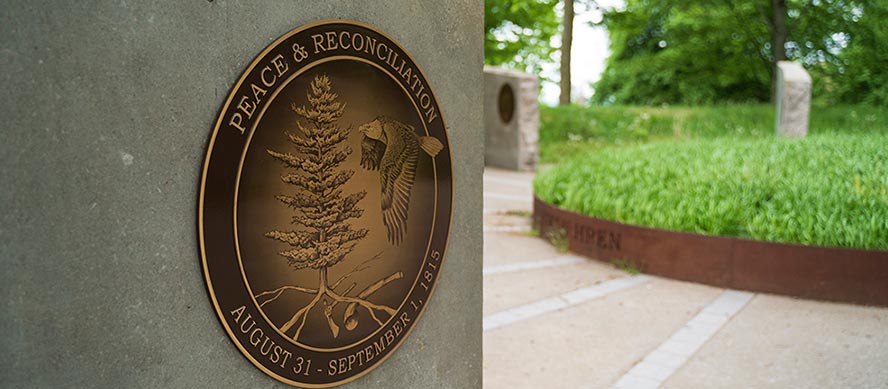
Landscape of Nations Commemorative Memorial & Battle of Queenston Heights
The Battle of Queenston Heights was the first major battle of the War of 1812. It marked an essential moment in the emergence of a fledgling country whose borders and character were being tested and defined. It was during this battle that Indigenous allies pinned down an overwhelming force of the American army, allowing the British and Canadians to counterattack and regain the Heights.
The Landscape of Nations Commemorative Memorial is dedicated to the Six Nations and Indigenous allies that participated in the War of 1812. Bronze statues of Indigenous War Captains John Norton and John Brant are on display, and the exhibit’s Memory Circle includes 400 million-year-old limestone walls, extracted from the Queenston Quarry nearby, that extend outward in a sunburst pattern. The Landscape of Nations Commemorative Memorial affirms the proper place of First Nations peoples at the core of Canadian history and signals their ongoing role in contemporary life and national affairs.
14184 Niagara Pkwy, Niagara-on-the-Lake, Ontario
The Landscape of Nations Memorial is dedicated to the Haudenosaunee (Six Nations) Confederacy and Indigenous allies that participated in the War of 1812. Limestones from the Queenston Quarry represent each nation of the Haudenosaunee Confederacy in a sunburst pattern. Abenakis, Delaware and nations from the north are also honoured in the memorial. The Landscape of Nations Memorial affirms the proper place of First Nations peoples at the core of Canadian history and signals their ongoing role in contemporary life and national affairs.
Six Nations Warriors Plaque
Unveiled in 1980, this plaque honours the Haudenosaunee Confederacy for its involvement at the Battle of Queenston Heights on October 13, 1812. The plaque compliments the Landscape of Nations Commemorative Memorial and tells the story of John Brant and John Norton, two key Indigenous leaders during the battle.
Queenston Village, west of Brock’s Cenotaph, at the base of the Heights on Queenston Street (look for the plaque on a granite boulder).
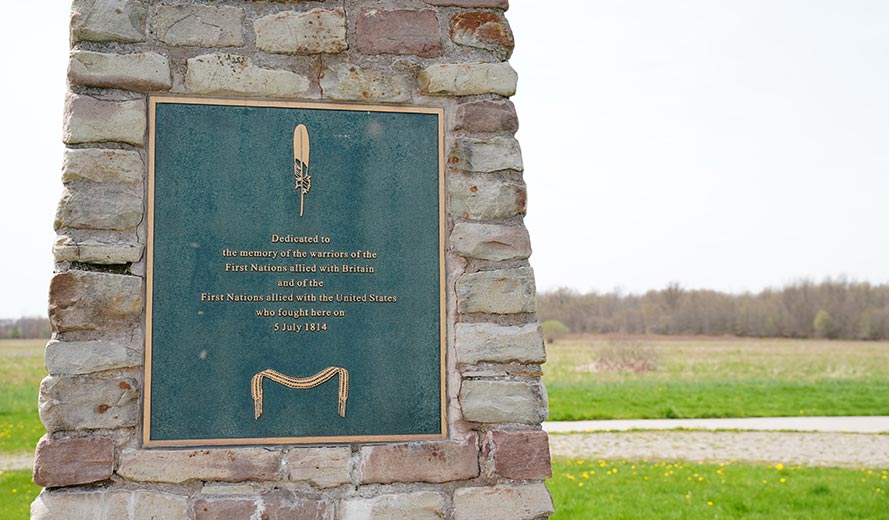
Battle of Chippawa
In the final year of the War of 1812, the American army crossed the Niagara River to begin what became known as the Niagara Campaign. Two days after they captured Fort Erie, on July 3, 1814, American forces clashed with the British at Chippawa. Unlike earlier battles in the war, Indigenous allies from the American side of the river fought alongside American troops during this battle. Unfortunately, they quickly realized that they were fighting against their Indigenous brethren across the battlefield.
Following the Battle of Chippawa, many Indigenous allies on both sides opted to disengage from the ongoing War of 1812. Only a small number of Indigenous warriors continued to fight until the Treaty of Ghent was signed on December 24, 1814.
Look for the Memorial Cairn in Chippawa Battlefield Park on the Niagara Parkway, south of Chippawa.
Norton’s Grove & Old Fort Erie
Norton’s Grove marks the location where a small band of Indigenous allies supported British forces during the War of 1812. The group was led by Major John Norton, the adopted Haudenosaunee leader, during Drummond’s Night Assault on August 15, 1814.
At Old Fort Erie, see traditional Haudenosaunee craftmanship on display, including an original knife sheath worn by Jacob Servos during the American Revolution (1775-1783).
Norton’s Grove is located on the north side of Dominion Road, across the street from Old Fort Erie (350 Lakeshore Road, Fort Erie, Ontario)
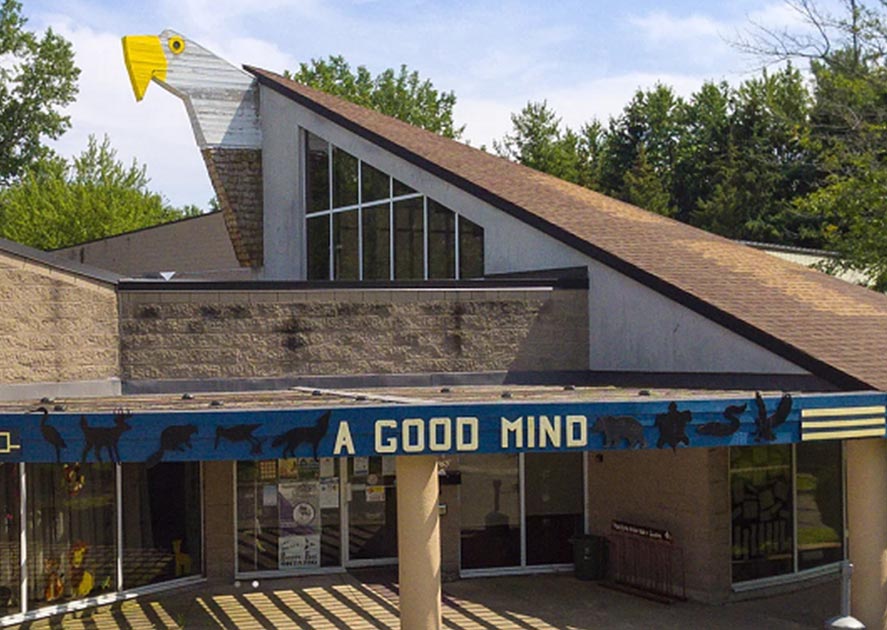
HONOUR
Niagara Regional Native Centre
The Niagara Regional Native Center’s commitment to the Indigenous community recognizes that the times we live in change quickly and the needs of the urban Indigenous peoples reflect those changes. Programs and services offered range from health and wellness, youth outreach, nutrition, and literacy to employment counseling, justice, and life-ling care. The Centre invites all peoples to participate in public programs.
Fort Erie Native Friendship Centre
The Fort Erie Native Friendship Centre is a social service agency that strives to enhance all aspects of Native life while extending friendship to the community. It offers cultural support services to Indigenous people in an urban setting while also creating awareness about Indigenous culture and history in order to establish relationships of mutual understanding.
Located at The Fort Erie Native Friendship Centre and the Niagara Regional Native Centre.
